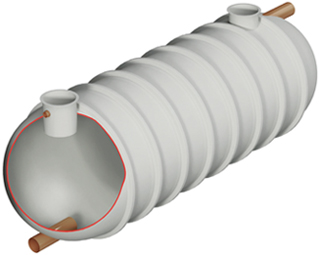What are submersible pumps?
Submersible pumps play a vital role in the moving and removing of water in submerged locations. The pump has the same function as a standard water pump but has been designed to work even when fully submerged in the water, or other liquids, which are to be transported. The pump is a piece of electrical equipment in watertight housing which contains a motor; this motor propels the liquid in question onwards and/or upwards through the use of an impeller.
There are a variety of types of submersible pump. The different types vary in the volume of water they can handle, the size of any solids the equipment can handle and whether they include a macerator or not. The type of pump you require will depend upon its intended usage.
Uses for submersible pumps
There are several different applications for submersible pumps but they can commonly be found in sewage pumping. There are different forms of sewage pump according to usage – for example, light duty models at domestic properties and heavy duty models to serve commercial, civil and industrial applications – and for at different stages of the sewage system. Generally, submersible pumps which are used as part of the sewer system are used to direct the flow of sewage water towards a sewage treatment facility.
Submersible pumps can be installed with a guide rail system for extracting them out of their submerged location. This has made them popular for use as part of a sewage pumping system, as previously, sending workers down to retrieve them – for example, when in need of repairs – was dangerous and filthy work.
Submersible pumps aren’t only used as part of wastewater systems and sewage pumping though – further uses include:
- Drainage
- General industrial pumping
- Rainwater tanks
- Pond and water feature pumps
- Seawater handling
- Deep well drilling
- Irrigation systems
Advantages and disadvantages
So, submersible pumps are a uniquely designed piece of equipment which can be used for a variety of applications, but how do they compare to other pump systems?
Advantages:
- The securely sealed, watertight design allows submersible pumps to effectively keep all liquids out of the mechanical part of the unit, ensuring full functioning when partially or fully submerged with no short-circuiting
- The electric motor used in submersible pumps means that the system works using direct pressure which is more effective than the suction method which other pumps use
- The use of direct pressure also makes submersibles more effective at pumping liquids over long distances
- Submersible pumps are self-primed, meaning no preparation has to be carried out prior to starting them up
Disadvantages:
- Wear and tear of seals, which would be hard to notice, can cause leakages which can be damaging to the internal workings
- You should take care when selecting your pump as some submersible pumps have to be fully submerged to work and can overheat if this is not the case
- Submersible pumps have a higher upfront cost than other pumps
Wildon UK are experts in drainage and wastewater solutions who operate throughout Stoke on Trent, Staffordshire and across the UK. We have a team of experienced, highly skilled operatives who you can depend upon to carry out first class work on a wide variety of drainage and wastewater issues. Our expertise allows us to carry out installations, maintenance and repair work on a large array of systems across domestic, commercial and agricultural premises. If you have any enquiries, don’t hesitate to get in touch with our helpful team today.
Go back to








